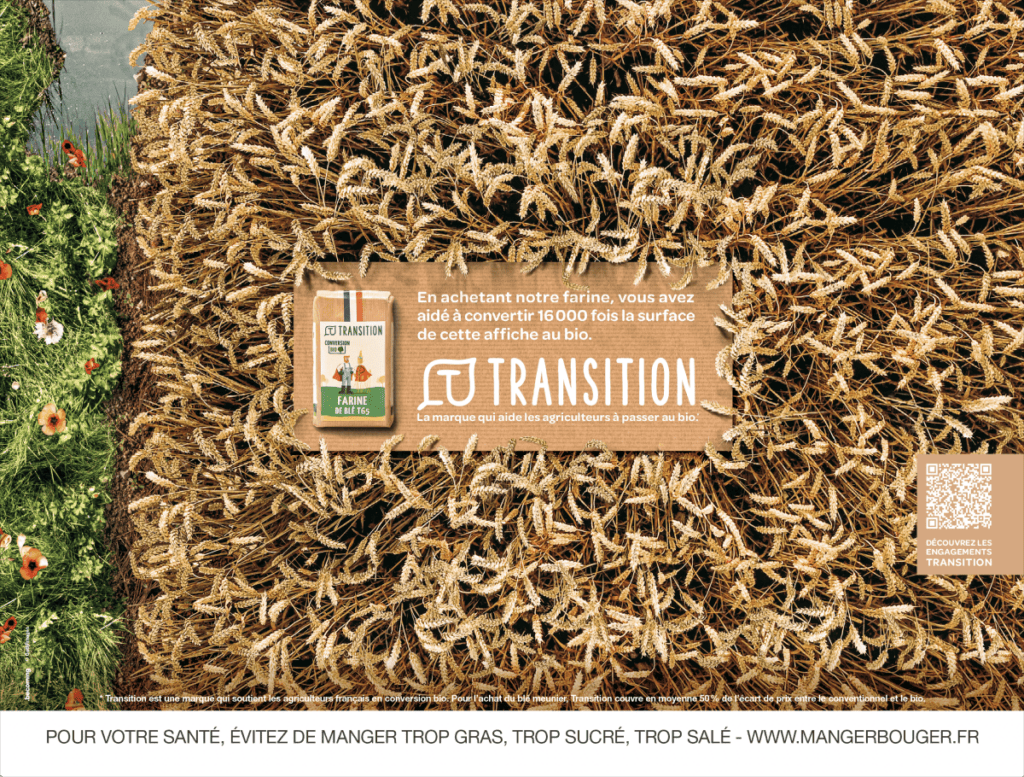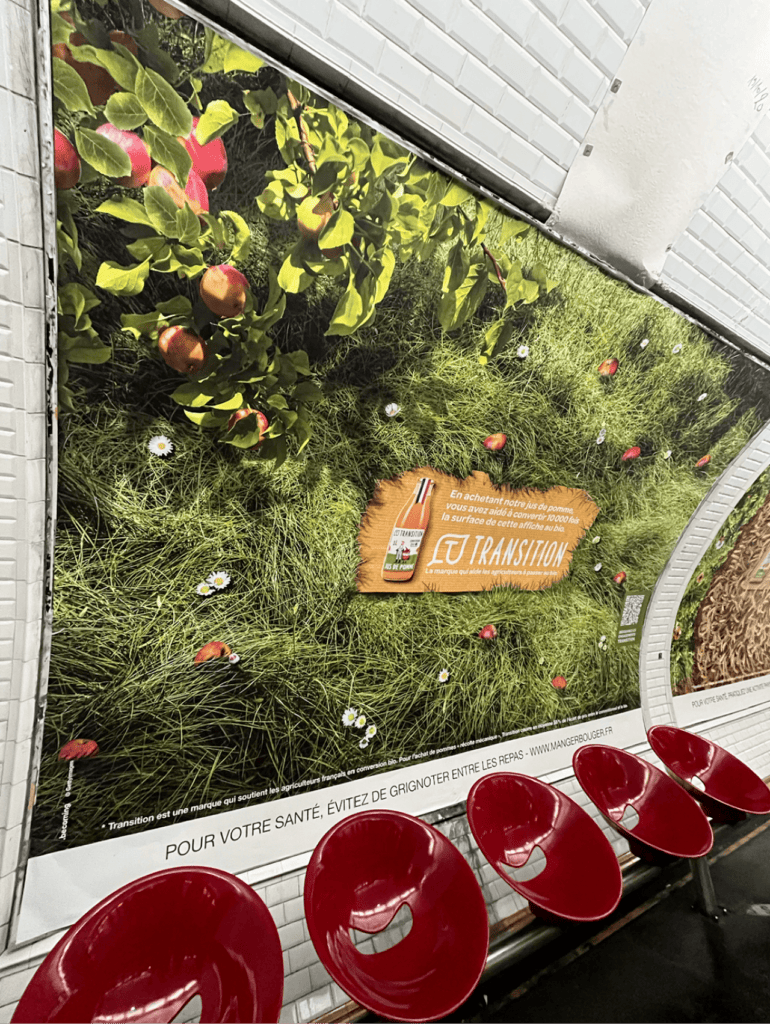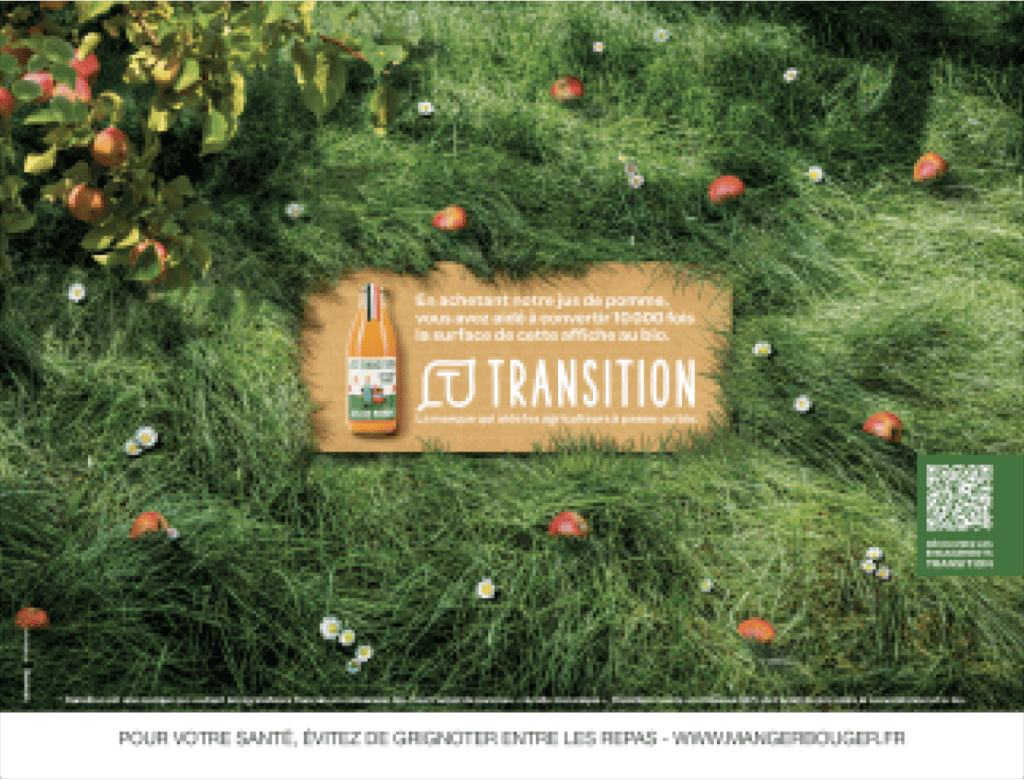Client and Sector
Client: Transition — a French food brand created to support farmers during their conversion to organic agriculture by purchasing products grown on transitioning farmland.
Sector: Food industry / organic transition, with a model focused on sourcing from farms undergoing organic certification.
Challenge
Many French farmers are willing to shift to organic farming, but the transition process is long, underfunded, and financially difficult. During this phase, producers receive little compensation — some even lose money.
The challenge: raise public awareness of this issue and communicate the brand’s economic model in a clear and impactful way that inspires support and purchase.
Approach
In partnership with .becoming, Transition created a campaign that visually translates the impact of each purchase into tangible support for farmers.
The idea: use the 12 m² size of a Paris subway billboard to symbolically represent how much land consumers help convert to organic every time they choose a Transition product.
Execution
Format:
A subway display campaign using standard 4×3 billboards in the Paris Metro — each representing exactly 12 square meters.
Creative concept:
Eye-catching product visuals (apple juice in a field, flour in a wheat field, etc.) paired with clear headlines like:
“By buying this apple juice, you’ve helped convert 10,000 times the surface of this billboard to organic.”
Rollout:
The campaign ran for two weeks in May 2023 across 120 ad panels, creating a visual “greening” of the underground landscape — and turning an abstract message into an emotionally compelling one.
Results
Awareness:
The campaign clearly translated Transition’s model into a concrete and intuitive visual story, capturing commuters’ attention and curiosity.
Commercial Impact:
Sales increased by 40% during the campaign.
Transition gained brand legitimacy in mainstream retail channels.
Products remained 5–10% more affordable than traditional organic alternatives, while sustaining a model that supports farmers during their transition phase.











